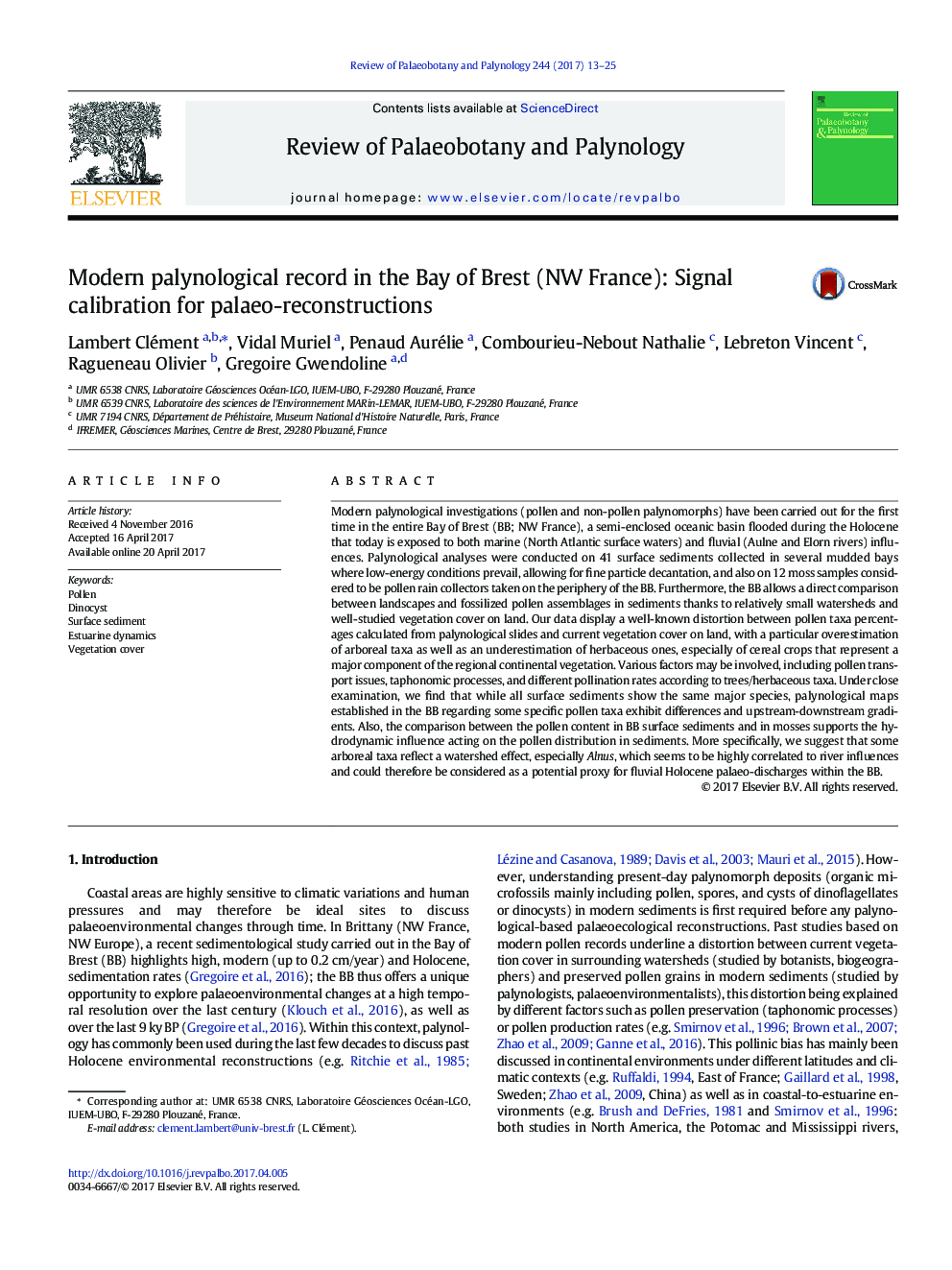| کد مقاله | کد نشریه | سال انتشار | مقاله انگلیسی | نسخه تمام متن |
|---|---|---|---|---|
| 5788355 | 1642453 | 2017 | 13 صفحه PDF | دانلود رایگان |
عنوان انگلیسی مقاله ISI
Modern palynological record in the Bay of Brest (NW France): Signal calibration for palaeo-reconstructions
دانلود مقاله + سفارش ترجمه
دانلود مقاله ISI انگلیسی
رایگان برای ایرانیان
کلمات کلیدی
موضوعات مرتبط
مهندسی و علوم پایه
علوم زمین و سیارات
فسیل شناسی
پیش نمایش صفحه اول مقاله

چکیده انگلیسی
Modern palynological investigations (pollen and non-pollen palynomorphs) have been carried out for the first time in the entire Bay of Brest (BB; NW France), a semi-enclosed oceanic basin flooded during the Holocene that today is exposed to both marine (North Atlantic surface waters) and fluvial (Aulne and Elorn rivers) influences. Palynological analyses were conducted on 41 surface sediments collected in several mudded bays where low-energy conditions prevail, allowing for fine particle decantation, and also on 12 moss samples considered to be pollen rain collectors taken on the periphery of the BB. Furthermore, the BB allows a direct comparison between landscapes and fossilized pollen assemblages in sediments thanks to relatively small watersheds and well-studied vegetation cover on land. Our data display a well-known distortion between pollen taxa percentages calculated from palynological slides and current vegetation cover on land, with a particular overestimation of arboreal taxa as well as an underestimation of herbaceous ones, especially of cereal crops that represent a major component of the regional continental vegetation. Various factors may be involved, including pollen transport issues, taphonomic processes, and different pollination rates according to trees/herbaceous taxa. Under close examination, we find that while all surface sediments show the same major species, palynological maps established in the BB regarding some specific pollen taxa exhibit differences and upstream-downstream gradients. Also, the comparison between the pollen content in BB surface sediments and in mosses supports the hydrodynamic influence acting on the pollen distribution in sediments. More specifically, we suggest that some arboreal taxa reflect a watershed effect, especially Alnus, which seems to be highly correlated to river influences and could therefore be considered as a potential proxy for fluvial Holocene palaeo-discharges within the BB.
ناشر
Database: Elsevier - ScienceDirect (ساینس دایرکت)
Journal: Review of Palaeobotany and Palynology - Volume 244, September 2017, Pages 13-25
Journal: Review of Palaeobotany and Palynology - Volume 244, September 2017, Pages 13-25
نویسندگان
Clément Lambert, Muriel Vidal, Aurélie Penaud, Nathalie Combourieu-Nebout, Vincent Lebreton, Olivier Ragueneau, Gwendoline Gregoire,